2.9. summary
According to the definition in the national standard GB / t14429-93 terminology of telecontrol equipment and systems, telecontrol refers to the application of communication technology to complete the functions of telemetry, telesignaling, remote control and remote adjustment. Referred to as "four remote".
Remote measurement refers to the application of communication technology to transmit the measured value of the measured variable. Synonym: telemetry.
Remote signal refers to the application of communication technology to complete the monitoring of equipment status information, such as alarm status or switch position, valve position, etc; Synonym: remote signaling.
Remote command refers to the command to change the state of running equipment by applying communication technology; Synonym: remote control.
Remote regulation refers to the application of communication technology to complete the control of operating equipment with more than two states; Synonym: remote modulation.
This chapter only wants to make a rough introduction to the measurement technology, so that readers can have a general understanding, rather than go deep into the technical details to discuss how to realize a function.
2.10. Remote signal
The essence of this remote signal is the acquisition and transmission of switching value state. The acquisition of switching value is generally isolated by optocoupler, and there were other methods in the past. The figure below shows a type of remote signaling input circuit:
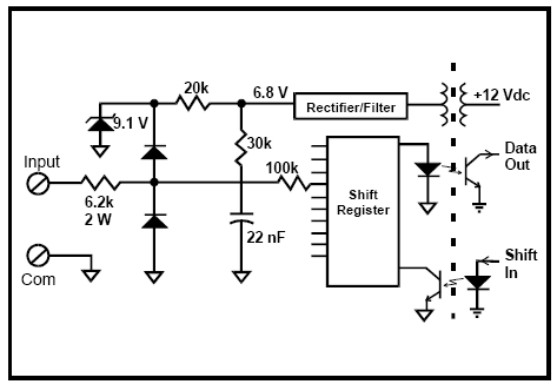
Its advantage is to save the number of optocouplers, but its disadvantage is that the scanning speed and reliability are not good.
This is another type of switching value input circuit, which is a typical
switching value input circuit of most RTU, PLC and DCS systems,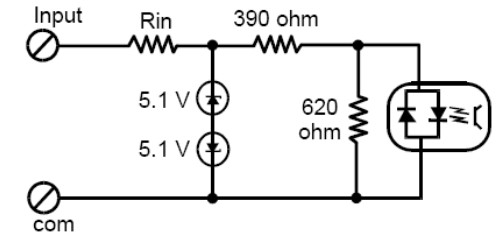
Switching value input circuit
However, its resistance value may not be typical. The principle is that when the switching value input state is connected to the power supply, the light-emitting diode of the optocoupler will emit light, be received by the photosensitive triode, and the photosensitive triode will be turned on; Normally, the light-emitting diode does not emit light, and the photosensitive triode stops. As the IO port of the scanning input of the computer system, or the extended digital input, the state of the switching value can be obtained.
If the scanning speed is fast enough, the change of switching value input state can be found, which can be used for low-frequency counting, sometimes called remote pulse. A group of switching value inputs, if the weight of each is different, combined, also known as digital value input, is widely used in water level coding information and transformer tap position. Sometimes, in order to study the sequence of events, it is necessary to record the time when the state of switching value changes. This information is called switching value with time scale, which is called SOE. The withstand voltage of optocoupler is generally below 3500v, and there are special models. The withstand voltage can exceed this figure, so optocoupler cannot be used to isolate occasions with high common mode voltage.
Refer to the following figure for field wiring, but the most important thing is to refer to the operation manual of Juying electronics manufacturer
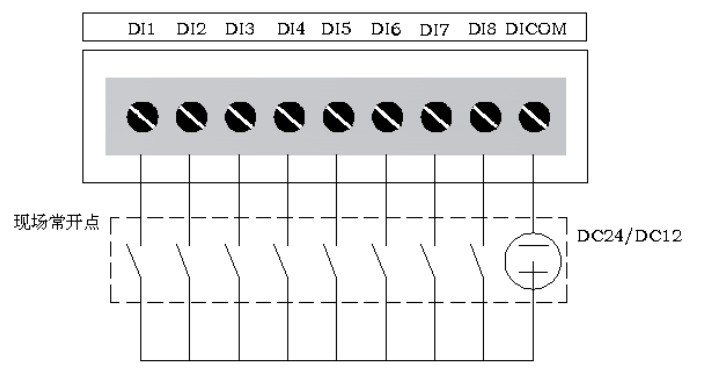
2.11. Remote command
The essence of remote command is switching value output. The following figure is a typical relay output:
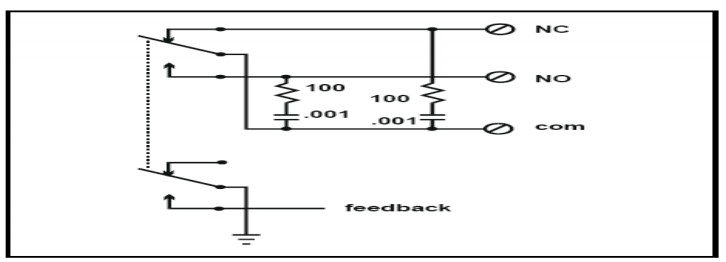
In the figure, double pole double throw relays are used, one for output and one for state feedback. This design refers to the application in very demanding occasions, ordinary applications, generally do not need feedback.
The resistance and capacitance in the figure are used for spark absorption. Under inductive load, it can reduce the overvoltage and spark between contacts and greatly improve the contact efficiency
Life span.
The output form of relay has good performance in reliability and anti load complexity, but its action speed is slow, it can not control very small signals (such as millivolt and micro ampere signals), and its service life is limited, so it is not suitable for all occasions. Switching value output is also in the form of transistor and solid-state relay, which has poor load capacity and poor overvoltage tolerance; It can act quickly and control very weak signals.
2.12. Remote measurement
Remote measurement, that is, analog input, generally carries out multi-channel switching measurement through AD conversion and multi-channel analog switch. Now the price of ad is very cheap. Some ad even make multi-channel analog switches directly on-chip. At present, 12 bit AD has been widely used, 16 bit AD and even 24 bit AD have also been widely used.
Remote measurement must be inseparable from transmitters and sensors. Transmitters are devices that convert physical signals into standard electrical signals. Sensors convert physical signals into
Equipment capable of electrically measuring signals.
The simplest example is temperature measurement. The sensor adopts PT100. PT100 sensor is a thermistor sensor. Its resistance value at 0 ° C is 100 Ω. For each increase of 1 ° C, its resistance increases by 0.3875 Ω. The temperature transmitter converts the resistance signal into a standard two-wire 4 ~ 20mA signal. If the range of the transmitter is 0 ~ 100 ℃, the transmitter will output 4mA current at 0 ℃ and 20mA current at 100 ℃. If the current is 12mA, the temperature of the sensor installation environment is 50 ℃.
Due to historical reasons, the signal of analog input is very complex, which generally includes the following signals: 0 ~ 10V, 0 ~ 5V, 0 ~ 20mA and 4 ~ 20mA. 4 ~ 20mA signal is most commonly used. General transmitters are transformed into 4 ~ 20mA signal output.
4 ~ 20mA signal has many advantages, such as convenient judgment of open circuit, convenient use of 2-wire power supply, long transmission distance (because it is constant current), not easy to be disturbed, etc. However, AD conversion is generally voltage input, which needs to be converted into voltage signal through resistance to collect. In addition, because it is a 2-wire system, it is very difficult for one instrument to give two acquisition devices, which can be realized only through special equipment.
Analog switches can be electronic switches. The simplest is the CMOS CD4066 model, which costs only a few yuan. There are also complex ones, such as adg508, which costs tens of yuan. In order to improve the isolation between channels, some people use photoelectric analog switches for multi-channel selection. The withstand voltage of such solid-state relays can reach 400V, while the withstand voltage of electronic switches is only a few volts or tens of volts. Many manufacturers claim that the withstand voltage between channels can reach 400V. How to realize it is a technical secret
Don't reveal it. In fact, the circuit design of each family is similar.
The typical chip of 12 bit AD conversion in domestic application is AD574, which has been discontinued and replaced with AD1674. 16 bit sarad is very expensive. Most of the 16 bit / 24 bit AD used now are delta sigma type ad. PGA is integrated in the chip, and the performance is very superior. For some typical applications, such as power telecontrol, the power transmitter and RTU equipment have been integrated, which is called AC sampling technology, which eliminates the error link, improves the accuracy and reliability of the system, and reduces the cost and installation complexity of the system. At present, there is a trend to combine measurement with transmitter, especially for typical sensors, such as thermal resistance, thermocouple, strain gauge and so on.
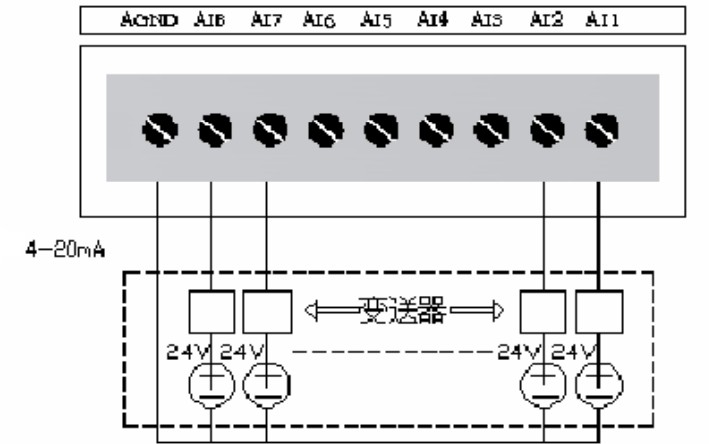
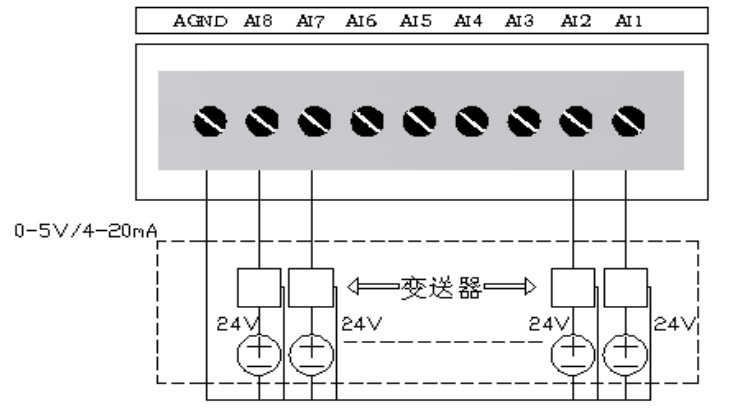
2.13. long-range regulation
Remote regulation is mainly analog output, but there are also switching output.
The main form of analog output is to convert the output signal into standard analog signal through DA conversion and corresponding circuit, such as 4 ~ 20mA, 0 ~ 10V, etc. For example, this signal is output to the frequency converter to change the output frequency and change the speed of the motor, so as to control the pressure and speed. There are also switching forms of remote regulation. For example, the opening of the valve is controlled by energizing the motor of the valve to rotate the valve and controlling the time. The longer the power supply time of the switching value in the positive direction, the greater the valve opening. In the reverse direction, the longer the power supply time of the switching value, the smaller the valve opening. This control is generally not linear.
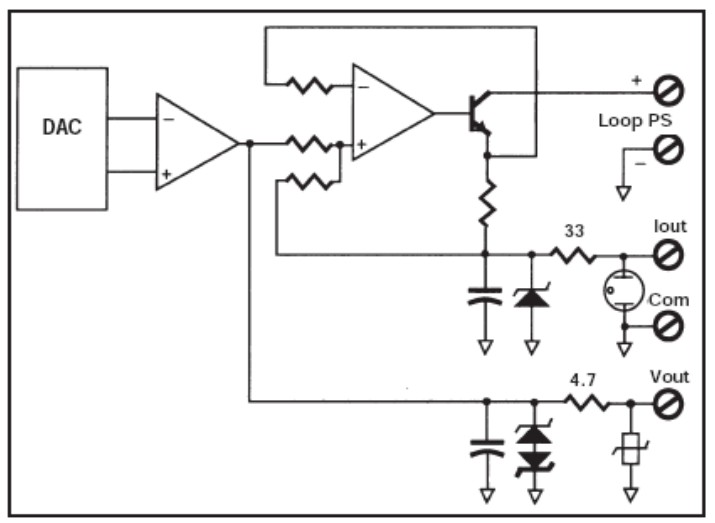
This block diagram shows two forms of voltage output and current output at the same time. Many protection elements are designed in this circuit to improve the reliability of the system.

 Manager Wang
Manager Wang
 OfficialAccounts
OfficialAccounts